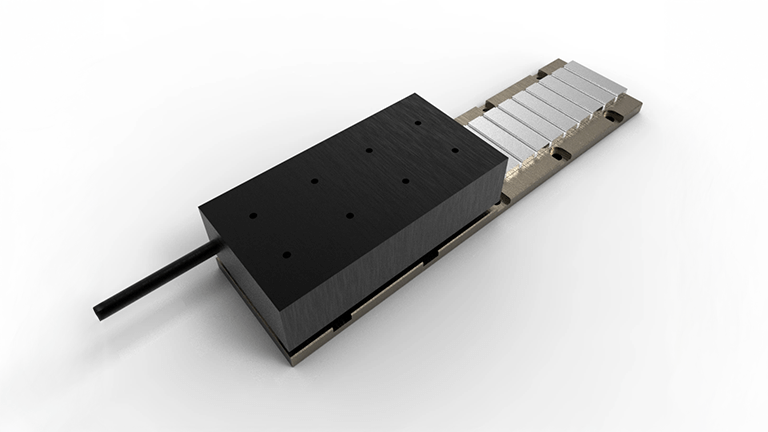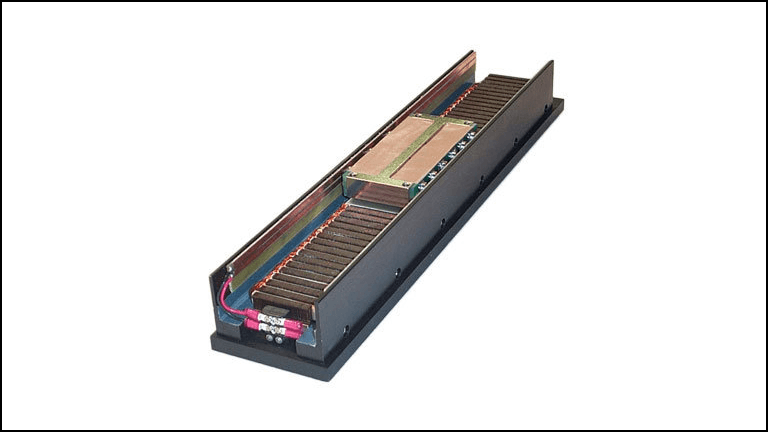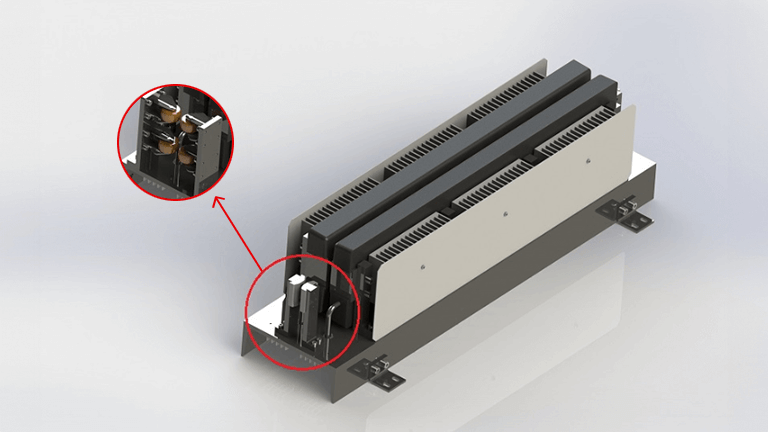Linear motors offer a versatile and efficient solution for applications requiring direct linear motion, high speeds, and precise positioning. While they may have higher costs and potential magnetic interference concerns, their advantages often outweigh these drawbacks in many industries.
What is Linear Motor?
A linear motor is an electric motor that generates motion in a straight line, rather than rotating. It works by using magnetic fields to create direct linear movement. Linear motors are used in various applications, such as overhead cranes, conveyor belts, and high-speed maglev trains, providing precise control and efficient movement.
Linear motors are commonly used in several industries, including:
- Manufacturing: For automation in production lines, such as assembly machines and robotic arms.
- Transportation: In high-speed trains, particularly maglev trains, and other forms of rail transport.
- Material Handling: In conveyor systems and overhead cranes for efficient movement of goods.
- Aerospace: For actuators in flight control systems and other applications requiring precise motion.
- Medical Equipment: In devices like MRI machines and surgical robots, where accurate movement is critical.
- Electronics: In printing equipment and laser cutting machines for precise positioning.
How Does Linear Motor Work?
Imagine a regular electric motor sliced open and laid flat. Here’s what happens:
- The spinning magnet part (rotor) becomes a stationary track with permanent magnets. This track is called the “primary.”
- The coil section (stator) becomes a flat plate that slides back and forth on the track. This plate is called the “secondary.”

Electricity is the key:
When you turn on the electricity, it flows through the coils in the secondary plate.
This creates a magnetic field that interacts with the magnets in the primary track.
The interaction of these magnetic fields creates a pushing force.
This pushing force propels the secondary plate back and forth along the primary track.
That’s the basic principle of how a linear motor works. It essentially converts electrical energy into straight-line motion.
Benefits of Linear Motor
Linear motors offer several advantages over traditional rotary motors for tasks requiring straight-line motion. Here’s a closer look at some key benefits:
- Reduced Wear and Tear: Unlike traditional motors with parts that physically rub against each other, linear motors utilize a contactless design. The moving platform rides on a cushion of air, significantly reducing friction and wear. This translates to longer lifespan, lower maintenance requirements, and less downtime for repairs or replacements.
- No Gearbox Needed: Traditional motors often require gearboxes to convert rotational motion into the desired linear movement. Linear motors eliminate this need entirely. Their design directly converts electrical energy into straight-line force, simplifying design, saving space, and improving overall efficiency. Fewer moving parts also contribute to reduced noise and vibration.
- Quieter Operation: Since electromagnetism controls the movement in linear motors, there’s minimal mechanical noise compared to traditional motors with gears and bearings. This is a significant benefit for applications in noise-sensitive environments like hospitals, residential areas, or even high-end manufacturing facilities.
Challenges of Linear Motors
Despite their advantages, linear motors do have some drawbacks to consider:
- Cost: Building powerful electromagnets, particularly for high-force applications, can be expensive. This initial cost can be a barrier for some projects. However, advancements in materials and manufacturing are constantly driving down costs, making linear motors more accessible.
- Efficiency: The space between the moving platform and the stationary track (air gap) is necessary for operation but can lead to some energy loss. This is because the magnetic field isn’t perfectly contained within the air gap. While advancements are being made to minimize this effect, it’s a factor to consider when choosing a motor for applications requiring optimal energy efficiency.
By understanding both the benefits and challenges of linear motors, you can make an informed decision about whether they’re the right choice for your specific project. Their unique advantages in terms of wear and tear, simplicity, and noise reduction make them a compelling option for a wide range of applications.
Superconductors: A Boost in Efficiency
These are special magnets that, when cooled to extremely low temperatures, lose almost all electrical resistance.
This makes them super efficient and helps power large linear motors used in maglev trains and other high-power applications.
Types of Linear Motor
Linear motors come in various configurations, each suited for specific applications. Here’s a breakdown of the most common types:
- Brushless Motors: These are the workhorses of factory automation. They offer smooth, precise motion with minimal maintenance due to the absence of physical brushes that wear out. This makes them ideal for tasks like high-speed pick-and-place operations and assembly lines.

- Brush Motors: These are older and simpler designs. While less expensive upfront, they require regular maintenance to replace worn brushes, which can interrupt operation and increase downtime. However, they can be a cost-effective option for less demanding applications with lower speeds and precision requirements.

- Synchronous Motors: These offer the highest level of precision and control. They utilize permanent magnets or electromagnets to create a synchronized magnetic field with the moving plate, resulting in extremely accurate positioning. This makes them perfect for applications like maglev trains, where precise control over levitation and propulsion is crucial.

- Induction Motors: These are a good choice for simpler applications requiring straight-line motion. They use a rotating magnetic field to generate force, making them a reliable and cost-effective solution for tasks like material handling and conveyor systems.

Matching the Motor to the Need
The choice of linear motor depends on the specific needs of the application. Factors like required speed, precision, force, duty cycle, and budget all play a role. Brushless motors provide a balance of performance and maintenance requirements, while synchronous motors offer the highest level of control for demanding applications. Induction motors can be a cost-effective option for simpler tasks.
Linear motors, in all their varieties, provide a powerful and versatile solution for precise straight-line motion. While the initial cost can be higher compared to traditional motors, advancements like superconductors are improving efficiency and affordability, making them a more practical choice for a wider range of applications. This technology is shaping the future of linear movement across various industries.
Conclusion
While challenges like cost and efficiency persist, advancements like superconductors are pushing the boundaries of what’s possible. As linear motors continue to evolve, they hold immense potential to revolutionize various industries, from high-speed transportation to automated manufacturing. The future of linear movement is undoubtedly electric, and linear motors are poised to be at the forefront of this exciting journey.

